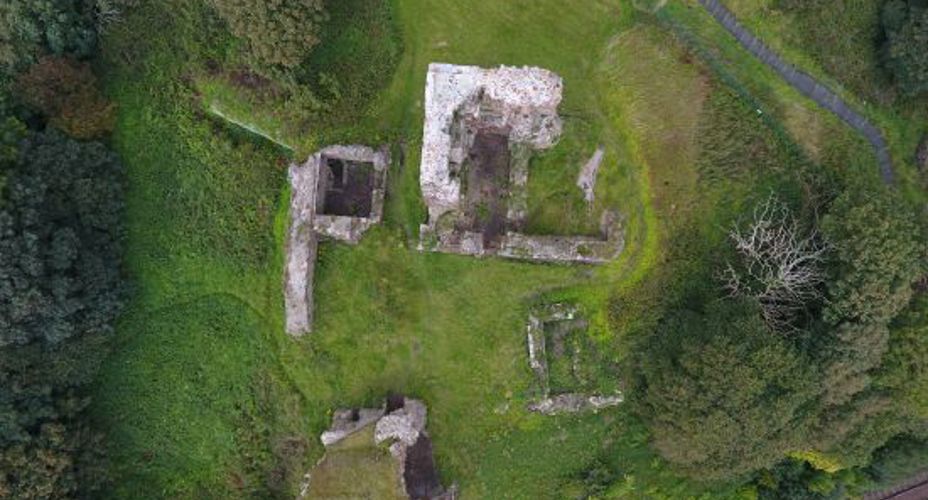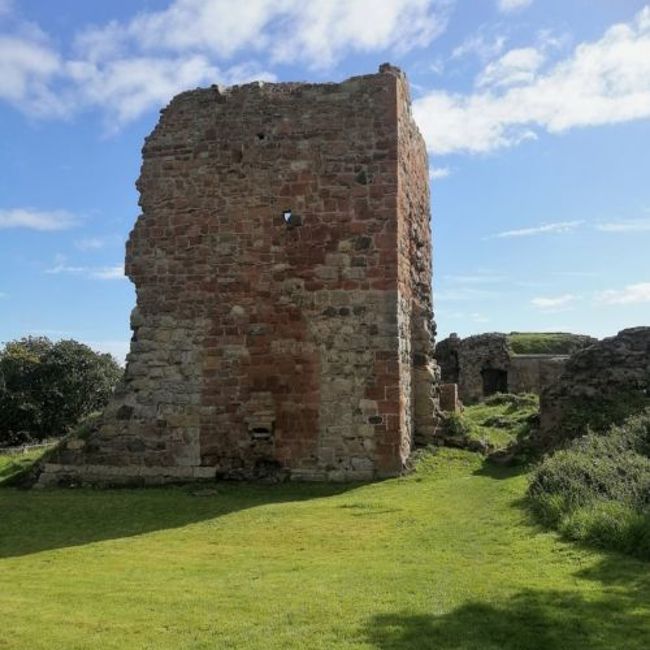Tuesday 19 08 2025

A pioneering, community-led study at Ardrossan Castle has shown how thermal imaging technology could be used to protect Scotland’s heritage by detecting hidden moisture damage.
Led by a team of UWS researchers working with local volunteers from Ardrossan Castle Heritage Society, the project used a £3,000 thermal camera and free software to detect damp areas inside the stone walls of the north-east tower, which are invisible to the naked eye.
Moisture, especially if it remains undetected, is one of the biggest threats to historic buildings. It can enter in several ways, by being drawn up from the ground, blown in by rain, or forming from condensation. As well as encouraging the growth of algae and mould, water can act as a solvent for the transmission of salts within the fabric of a building, which may lead to destructive freezing and thawing cycles. Exposed structures suffer from surface weathering via erosion caused by wind-blown rain, which allows liquid water to penetrate deeply into the building fabric.
The thermal imaging technique used by the researchers finds this hidden water damage by measuring heat differences across the building’s surface. Damp areas retain heat differently from dry stone, making it possible to see where moisture has seeped in. The study also picked up subtle differences in how the ancient lime mortar and stone react to temperature changes, providing valuable clues about how the structure was built and how it's weathering over time.
The researchers hope that this project could provide the foundation for a sustainable, community-based model as those trained in the techniques can go on to train others.
“Moisture is one of the biggest threats to historic buildings. By identifying these issues early, we can prevent long-term damage and save important sites like Ardrossan Castle for future generations. These techniques could also provide a way for other local conservation groups to monitor historic sites using commercially available equipment.”Dr Michael Bowry, UWS

Alison Montgomery, Chair of ACHS, said, "Ardrossan Castle Heritage Society were delighted to work with Dr Bowry and Dr Simpson on this valuable community learning project and are proud to see our efforts being recognised in this new publication within the Archaeological Prospection journal.
"We believe partnership projects such as ours, that link local communities with academic researchers have the potential to drive community regeneration efforts by upskilling local volunteers alongside making valuable contributions to science.
"We are eager to see other heritage organisations use this inexpensive technology and would recommend any group interested in maintaining and preserving Scotland’s built heritage environment for the enjoyment of all future generations to reach out to the research team at UWS."
Read the full paper here.
This research aligns with the United Nations Sustainable Development Goals (UNSDGs), specifically Goal 11: Sustainable Cities and Communities.